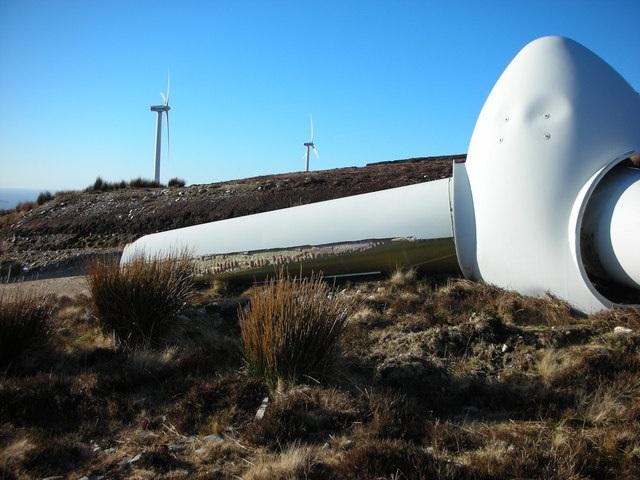Big government environmental “fixes” often result in unintended environmental or human health consequences that are worse than the original problem the government solution was meant to solve.
Nowhere is this clearer than with government efforts to fight climate change, an effort in vain if ever there was one.
In Climate Change Weekly, I have detailed the high environmental costs and dangers to people that come with electric vehicles, wind turbines, and solar panels — from fires, to the human and environmental impact of the mining and refining of the minerals necessary to produce and operate them, to the waste problems they create.
As whale deaths mount on the East Coast, The Heartland Institute along with our allies at CFACT and the National Legal and Policy Center have filed a lawsuit seeking a temporary restraining order on Dominion Energy’s plans to begin pile driving for construction of the base and tower portions of 176 giant offshore wind turbines it plans to erect at great economic and environmental costs off the coast of Virginia as part of President Biden’s “all of government” approach to fight climate change.
CFACT has established a great resource devoted to the myriad environmental problems — including the threat to the endangered North Atlantic Right Whale (NARW) from the push for offshore wind along the East Coast. These turbines are being erected right in the middle of NARW and other protected marine mammals’ habitat and migration routes. In the rush to erect these turbines quickly, the federal government and Dominion played fast and loose with the rules and permits, in particular failing to follow the law and proper procedures in accounting for potential comprehensive, cumulative whale impacts.
Research released after Dominion had already received permission from the federal government to proceed, shows that, contrary to what Dominion and the Biden administration have claimed in their reports, the ships contracted to do the pile driving produce an amount of noise during operations that exceeds what federal biologists have determined to be safe for whales.

Mind you, for all the damage these offshore turbines will do to a variety of marine mammals and the ocean ecosystem, they will produce no measurable reduction on global temperatures.
Scotland provides an interesting case study concerning the environmentally harmful unintended consequences produced by government climate policies.
First, Scotland pitted one climate solution against another by cutting down nearly 16 million trees — you know, those carbon sinks that everyone, including wildlife, loves — to make way for wind turbines. That is an average of more than 1,700 trees destroyed each day.
To make matters worse, the turbines are disintegrating quickly, scattering tons of microplastics across the Scottish countryside in the process. As the Scottish Daily Express revealed early in 2023, the edges and tips of the turbine blades are shredding during operation, resulting in small particles and larger chunks of composite waste littering the countryside and possibly fouling the waters with various chemicals.
No one knows how big the problem is because the Scottish government has refused to account for it, nor has it mandated that the companies involved do so. Environmentalists have calculated a single turbine can drop up to 62 kilos of microplastics annually and Scotland has 19,000 turbines. You do the math.
Lest one think Scotland’s environmental conditions or wind turbines are unique in some fashion, recent research from Sweden has also found that turbines there are shedding microplastics as well. The study reported that turbines were shedding tons of microplastics, polluting the surrounding land and waters with more than 50 different chemicals released as the composite materials erode and break down.
Back to Scotland’s great experiment in fighting climate change. The Scottish Daily Express reports that Scotland has banned the installation of wood burning stoves in new and remodeled homes as part of the push to reduce emissions.
The decision was made even though a government commission specifically found that wood burning stoves actually emit less CO2 than the alternatives pushed by the government: wind turbines, solar panels, and heat pumps. Indeed, the government study found that wind, solar, and heat pumps produce 48, 105, and 123 grams of carbon dioxide per kilowatt hour respectively, compared to just 25 g/Kwh, for wood stoves.
Can someone explain to me, if carbon dioxide is the danger, how mandating technologies that produce more CO2 than good old wood, as a replacement for wood, makes climate sense?
It seems the Scottish government’s “headlong rush for net zero” is actually being undermined by its own policies.
To top all of this off, recent peer-reviewed research demonstrates that the push to replace plastics with alternatives because plastics are made of fossil fuels, could result in higher carbon dioxide emissions — the dread gas alarmists are most concerned about. In particular, the research assessed 16 applications across five key sectors where plastics are used, accounting for about 90 percent of the global plastic volume. The results: For 15 of the 16 applications a plastic product produced less GHG emissions than their alternatives, as much as 90 percent fewer emissions across the respective products’ life cycle for some applications.
Objective data reveal no evidence that climate change is causing a crisis today, meaning we have time to get the technology right. Because there is no pending climate apocalypse there is no justification for mandating the use of technologies that research and experience shows are environmentally harmful and unsafe.
H. Sterling Burnett, Ph.D., (hsburnett@heartland.org) is the director of the Arthur B. Robinson Center on Climate and Environmental Policy at The Heartland Institute, a non-partisan, non-profit research organization based in Arlington Heights, Illinois.

